
Author: AasthaFinTech

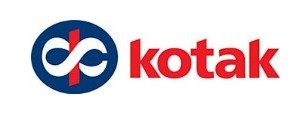
Kotak Mahindra Bank Ltd.
CMP 1,790
> YoY Net Profit Market Rate Oct
2024 13,781.58 1800
2023 10,939.30 1770
2022 8,572.69 1900
2021 6,964.84 1740
2020 5,947.18 1400
▶️ Market Cap : ₹3,50,684 Cr.
▶️ Stock P/E : 16.30
▶️ ROCE : 14.06 %
▶️ ROE : 15.88 %
▶️ Profit YoY 3Yrs : 30+ %
▶️ Sales growth 3Years : 23.15 %
▶️ Net Profit Margin : 30 %
▶️ Growth Potential YoY : 25 %
> Aastha Fintech
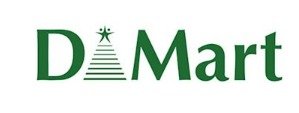
DMART
Current Price ₹5303.45
About :
Avenue Supermarts Limited, known as D-Mart, is a prominent Mumbai-based supermarket chain established in 2002. It is a leading and profitable Food and Grocery retailer in India, offering a diverse range of products across various categories. With a focus on efficient supply chain management and strategic store locations, the company targets residential areas with a mix of consumer demographics. Operating on an ownership model, Avenue Supermarts prioritizes long-term lease arrangements for its stores and has established distribution and packing centers to bolster its retail network.
> YoY Net Profit Market Rate Oct
2024 2,694.92 5,300
2023 2,556.40 3,800
2022 1,616.17 4,400
2021 1,165.31 4,000
2020 1,349.89 2,200
▶️ Market Cap : ₹3,45,386 Cr.
▶️ Stock P/E : 130
▶️ ROCE : 18.34 %
▶️ ROE : 13.56 %
▶️ Profit Var 3Yrs : 36 %
▶️ Sales growth 3Years : 18 %
Growth Potential YoY : 18 %
> Aastha Fintech
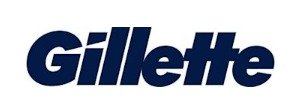
Gillette India Ltd.
Current Price : ₹ 9,036.05
About :
Gillette India Limited is a public company domiciled in India and is incorporated under the provisions of the Companies Act, 1956. The company is engaged in manufacturing and selling of branded packaged fast moving consumer goods in the grooming and oral care businesses. The company’s products are sold through retail operations including mass merchandisers, grocery stores, membership club stores, drug stores, department stores and high frequency stores.
▶️ Market Cap : ₹ 29,435 Cr.
▶️ Current Price : ₹ 9,036.05
▶️ Stock P/E : 71
▶️ ROCE : 45.58 %
▶️ ROE : 35.97 %
▶️ Profit Var 3Yrs : 27 %
▶️ Sales growth 3Years : 9 %
✅ Total Shares holder : 57,000
▶️ Dividend Declared (₹)
> EX Date Amount (₹)
08 Feb 2024 45.0000
08 Feb 2024 40.0000
21 Nov 2023 50.0000
09 Feb 2023 35.0000
10 Nov 2022 36.0000
> Growth Potential : 35%
> Aastha Fintech
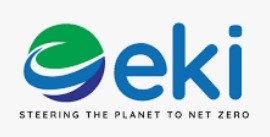
EKI Energy Services Ltd.
> CMP ₹ 328.8
Market Cap ₹905 Cr.
P/E: Negative
Sales Growth : 182 % QTY YoY
> ✅ Upside Potential : 80 % Down Side Risk 30% ( STOP LOSS )
> About:
EKI Energy Services Limited provides a range of services including Carbon Credits Trading, Climate Change Advisory, Business Excellence Advisory, and Electrical Safety Audits to clients in government and private sectors. The ISO 9001:2015 certified company specializes in carbon offsets generation projects, management standards implementation, consulting, audit, and training to meet the needs of various stakeholders and regulatory requirements.
> Promoter Holding : 73%
> All time High : 3100
> Total Shares Holder : 65,812 ( Compare higher Side as per Market Cap)
> Current Position :
EKI Energy Services Ltd. (EKI), erstwhile EnKing International in the climate sector globally, is a leading Carbon Credit Developer & Supplier across the globe. The Indore headquartered company is listed on the Bombay Stock Exchange (BSE).
EKI is 15+ years old and is a global market leader with deep expertise in the realm of climate change, carbon offset solutions, and carbon asset management. The company is today present in 16+ countries and has 3500+ clients across 40+ countries worldwide. As on date, EKI has supplied over 200+ million offsets.
> Aastha Fintech Pvt. Ltd.
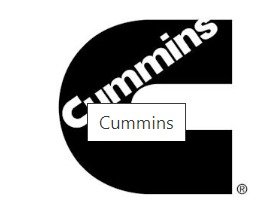
Cummins India Ltd
Current Price : ₹ 3,831
✅ About :
Cummins India Limited is a leading manufacturer and seller of engines and related products. It is a part of the Cummins Group in India and operates in three main business units – Engine, Power Systems, and Distribution. The Engine Business focuses on engines for various vehicle and equipment markets, while the Power Systems Business specializes in high horsepower engines for different applications. The Distribution Business caters to the maintenance and uptime of Cummins equipment
➡️ Key metrics
⚡Market Cap : ₹ 1,04,195 Cr.
⚡Stock P/E : 59.0
⚡ROCE : 35.2 %
⚡ROE : 28.1 %
⚡Debt to equity : 0.02
⚡Profit Var 3Yrs : 36.8 %
⚡Sales growth 3Years : 27.4 %
> ⬆️ Up Side Potential : 30%
> Electrolyzers: Cummins is a leading manufacturer of proton exchange which are used to produce green hydrogen by splitting water using renewable electricity
> Hydrogen Storage: Cummins is developing solutions for storing hydrogen, including high-pressure
➡️ Growth opportunities
> ⚡Electrolyzer Technology: Cummins can leverage its existing capabilities in power generation to develop and manufacture efficient electrolyzers
> ⚡Fuel Cell Systems: The company can also focus on developing and commercializing fuel cell systems
Disclaimer: The above data should not be considered as a Buy or Sell recommendation. The analysis has been done for educational and learning purpose only.
> Aastha Fintech (P) Ltd.
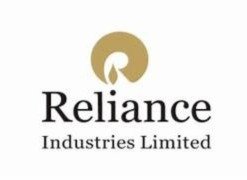
> Will Reliance Industries cross ₹ 4,000 ?
> CMP ₹ 3026
> Market Cap (Cr.) 20.30LCr
> Stock P/E 29.54
> EPS ₹ 102.9
> ROE (%) 9.96%
> ROCE (%) 7.64%
> Promoter Holding (%) 50.33%
> FII Holdings (%) 21.75%
> Debt to Equity Ratio 0.57
> Current Ratio 1.18
> Reliance Industries Limited (RIL) stands as a colossal entity in India’s corporate sphere, reflecting both the vastness and versatility of the Indian economy. With the company’s expansive footprint across various sectors, the question of when RIL’s stock might cross the Rs 4,000 mark is both compelling and complex. To address this, let’s delve into the dynamics of RIL’s operations and broader economic influences shaping its future.
🔹 Economic Context and Impact
India’s economic landscape is experiencing remarkable growth, with an 8.2% GDP increase in FY24, surpassing the previous year’s 7.2% growth. This upturn is supported by a surge in domestic consumption and substantial government spending, suggesting a robust economic foundation. The moderation in inflation and a strong foreign reserves position further bolster this growth narrative.
The energy sector, vital to RIL’s operations, is also on an upswing, with increased oil and gas consumption. This burgeoning demand underscores India’s position as a rapidly expanding economy and offers a favorable backdrop for RIL’s energy and petrochemical businesses.
🔹Reliance Industries’ Diverse Business Segments
1. *Retail Segment:*
Reliance Retail is a titan in the Indian retail sector, with a vast network of stores and a significant customer base. The segment’s growth, driven by technological advancements and strategic expansions, aligns with the projected increase in the retail market to US$1.4 trillion by 2027. Its focus on omnichannel integration and private labels positions it well for continued success.
2. *Digital Services Segment:*
Jio’s dominance in the telecom sector, with substantial data traffic and a growing subscriber base, positions it as a major player in India’s digital economy. The continued expansion of 5G and JioAirFiber services is critical to capturing the increasing internet demand and driving digital adoption across the country.
3. *Media and Entertainment Segment:*
The media segment’s growth is fueled by JioCinema’s popularity and increased investments in content creation. The focus on regional content and global partnerships further strengthens its market presence in India’s expanding media and entertainment industry.
4. *Oil and Chemicals Segment:*
Despite global volatility, RIL’s Oil to Chemicals (O2C) segment remains resilient. Investments in expanding petrochemical capacities and new projects like the carbon fiber plant are set to enhance its long-term growth prospects.
5. *Oil and Gas E&P Segment:*
The Exploration & Production (E&P) segment’s impressive performance is driven by increased production and favorable gas pricing. The expansion plans in the KG D6 block and CBM fields align with India’s goal of increasing gas’s share in the energy mix.
6. New Energy Segment:
RIL’s commitment to new energy, including green hydrogen and renewable energy, positions it as a forward-thinking leader in India’s energy transition. The planned investments and qualification for government schemes underscore its ambition to become a global leader in climate technology.
🔹Financial Performance and Future Outlook
RIL’s financial performance shows a steady upward trajectory. Revenue increased to ₹899,041 crore in FY24, and net profit climbed to ₹79,020 crore. The company’s operating profit margin improved to 18%, reflecting enhanced efficiency.
Notably, while there has been an increase in debt-to-equity ratio to 0.60, RIL’s overall debt burden has been significantly reduced compared to previous years. This improved financial health and strategic debt management are crucial as RIL navigates its ambitious growth plans.
🔹Bonus Issue and Market Implications
The upcoming board meeting on September 5, 2024, to consider a 1:1 bonus share issue could potentially impact RIL’s stock price. A bonus issue often signals confidence in the company’s performance and can enhance shareholder value, potentially driving the stock price towards the Rs 4,000 mark.
🔹*Conclusion
Reliance Industries Limited continues to showcase its dominance and adaptability across diverse sectors. With its extensive investments in retail, digital services, media, oil and gas, and new energy, RIL is strategically positioned to leverage India’s economic growth. As the company advances its expansion plans and technological innovations, it is well-placed to capitalize on emerging opportunities.
Given these factors, RIL’s trajectory towards crossing the Rs 4,000 mark in stock price is plausible, contingent upon continued robust performance and market conditions. The company’s commitment to innovation and growth aligns with India’s economic ambitions, positioning RIL as a key player in the nation’s transformative journey.
> Aastha Fintech (P) Ltd.

Shilchar Technologies Ltd:
🔹CMP: ₹ 6,130
🔹M Cap: ₹ 4,807 Cr.
🔹P/E: 48.3
🔹3 years Sales Growth: 49.9%
🔹Debt to equity: NIL
🔹 About
Shilchar Technologies Ltd specializes in the manufacture of F R core transformers and has expanded its product range to include various types of transformers and cores serving diverse industry segments globally. Their product line consists of Power Transformer, Distribution Transformers, Linear Transformers, Standard Line Transformers, Telecom Transformer, Cores & Lamination, and Bobbins.
> 🔹Total Shares Holder : 23,220
> 🔹Potential Growth : 45% YoY
> Aastha Fintech (P) Ltd.
Disclaimer: The above data should not be considered as a Buy or Sell recommendation. The analysis has been done for educational and learning purpose only.

🔶Amber Enterprises India Ltd:
A leading HVAC&R company in India, specializing in air conditioners and components, with a 23.6% share in the Room Air Conditioner market.
🔹M Cap: ₹ 14,623 Cr
🔹CMP: ₹ 4,534
🔹P/E: 90.9
🔹CAPEX: ₹350-375 Cr for FY25.
🔹3 Years Sales Growth: 30.5%
🔹Potential 35% Up Side
🔹Amber enterprises has 23.6 % market share in AC Market
🔹Revenue RAC 43%, electronic 16%
> Amber+ noise ltd JVL( 4 th smart watch making in world)
> Amber 2.0 enter in washing machine, fridge, RO, microwave
> Aastha Fintech (P) Ltd.
Disclaimer: The above data should not be considered as a Buy or Sell recommendation. The analysis has been done for educational and learning purpose only.


